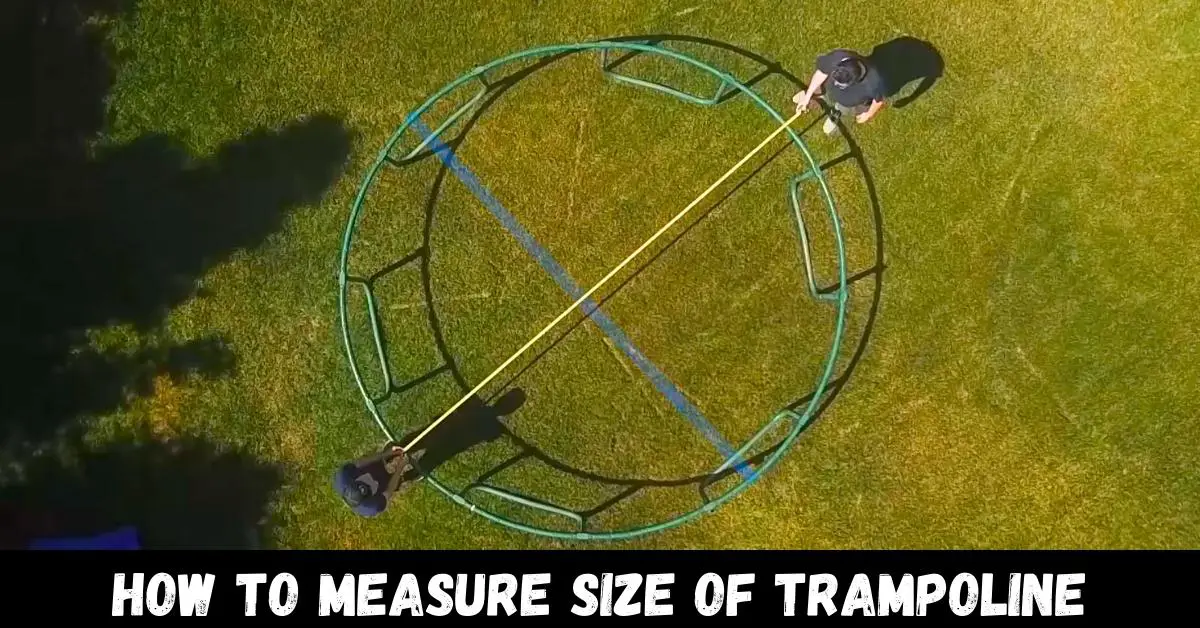Do you know how to measure size of trampoline? One of the most common reasons for measuring a trampoline is to order replacement parts and accessories, such as a safety net, springs, or padding.
By accurately knowing the size of your trampoline, you can ensure that you purchase the correct accessories that fit perfectly, providing the desired safety and functionality.
Additionally, if you plan to sell your trampoline, knowing its size is crucial information to share with potential buyers. It allows you to provide accurate details about the trampoline’s dimensions and helps interested individuals determine if it will suit their needs and available space.
Understanding the measurement process is essential regardless of the reason for measuring your trampoline, whether it’s for replacement parts, accessories, or selling purposes.
It ensures you have all the necessary information to make informed decisions and avoid mismatches or complications.
This guide will provide you with all the necessary information and steps to accurately measure your trampoline, enabling you to confidently proceed with your specific requirements.
How to Measure Size of Trampoline: To measure the size of your trampoline, measure the diameter of the jumping mat from edge to edge. This will give you the size of your trampoline.
Tools Needed for Measurement
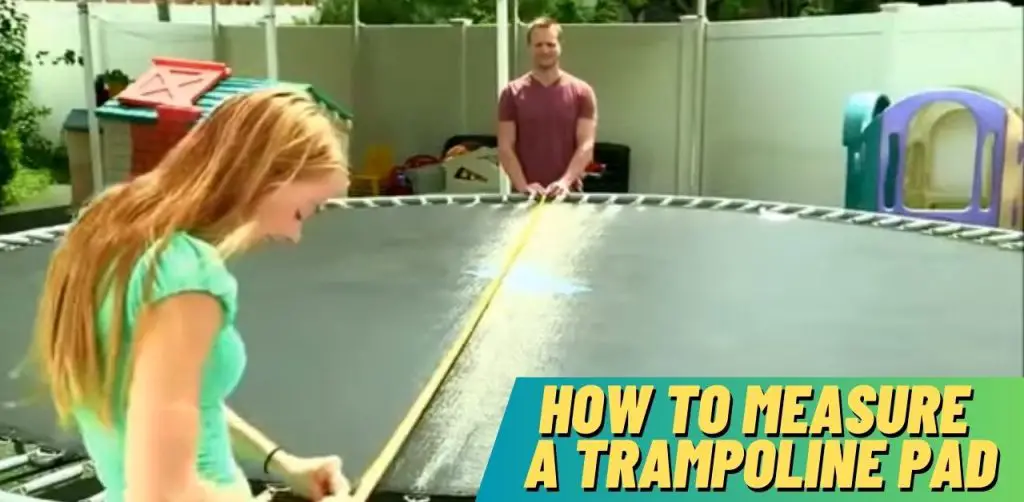
To accurately measure the size of a trampoline, you will need the following tools:
Measuring Tape or Ruler:
A measuring tape or ruler is essential for measuring the various dimensions of the trampoline, such as the diameter, frame size, and jumping surface. Make sure it is long enough to span the required distances.
Level:
Using a level is important for accurate and straight measurements when measuring a trampoline. It helps maintain a level plane, ensuring that your measurements are precise.
By using a level, you can ensure that the trampoline is properly positioned and that your measurements are reliable. This ensures that you select the right size trampoline and maintain its stability and safety during use.
String:

In some cases, you may need a piece of string to assist with measuring irregular or non-linear sections of the trampoline. The string can be used to trace the shape or perimeter, which can then be measured with a ruler or measuring tape.
With these tools on hand, you will be well-equipped to accurately measure the trampoline’s size and obtain the necessary dimensions for various purposes, such as ordering replacement parts or accessories.
What are the reasons for measuring a trampoline?
You may be wondering why it’s important to measure a trampoline. Well, there are a few reasons. Firstly, you need the measurements to ensure a proper fit for the safety mat and enclosure. This ensures that users are protected while jumping.
Additionally, knowing the measurements helps you decide where to place the trampoline, considering the available space. Before we dive into accessories, let’s start with the basics of measuring the trampoline.
What is the process for measuring the size of trampoline springs?
If you need to order replacement parts for your trampoline, you might have to measure the length of the springs. Here’s how you can do it:
- Remove a spring from the trampoline. It’s best to measure it when it’s not attached and slightly stretched, as that can lead to inaccurate measurements.
- Take a tape measure and measure from one end of the spring to the other. This will give you the spring length you can use when ordering the replacement part.
By following these steps, you can ensure that you get the right size springs for your trampoline and maintain its proper functioning.
How to measure your yard for a trampoline?
According to Springfree’s recommendation, it is advised to have a clearance space of 1.5 meters (approximately 5 feet) around all sides of the trampoline.
For a round, 10-foot trampoline (about 3 meters), you would need a space that is 6 meters (around 20 feet) in length and width. This allows for a safe area for the trampoline to be placed.
How to Measure Size of Trampoline?

To measure the size of a trampoline, follow these steps:
- Measure the Diameter:
For a round trampoline, start by measuring the diameter. This is the distance across the circular frame, passing through the center. Use a measuring tape or ruler and measure from one edge of the frame to the opposite edge. Make sure to measure across the widest point.
- Determine the Jumping Surface:
To find the size of the jumping surface, measure the diameter of the actual jumping mat. Exclude any frame padding or springs from the measurement. This will give you an accurate measurement of the available jumping area.
- Measure the Frame Size:
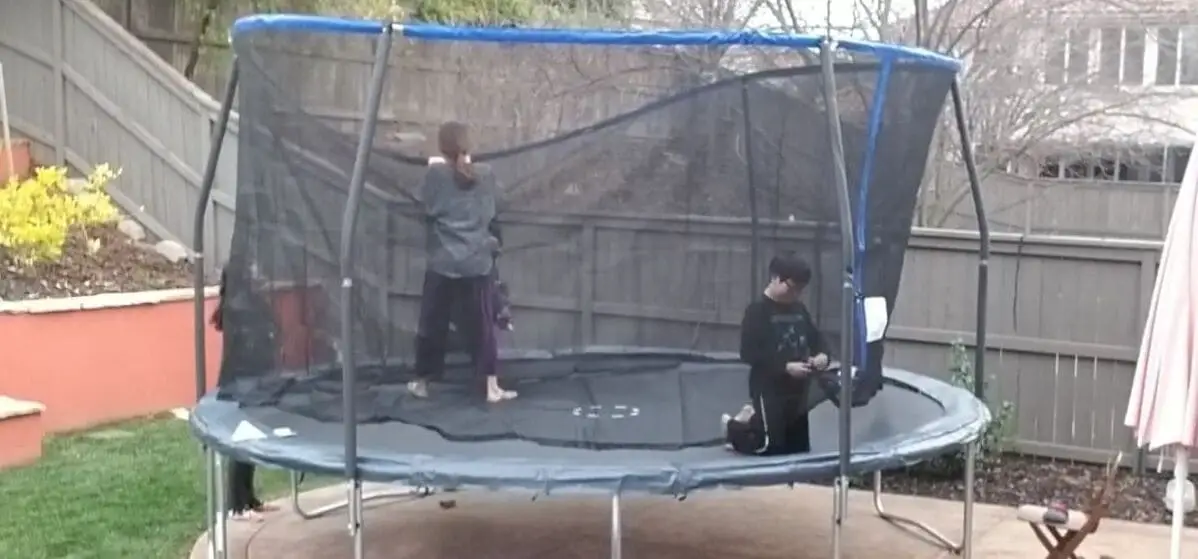
Measure the outer edge of the trampoline frame to determine its size. Start at one end of the frame and measure along the outer edge until you reach the opposite end.
This measurement will help you understand the overall dimensions of the trampoline.
By following these steps and using the appropriate measuring tools, you can accurately determine the size of your trampoline. These measurements will be helpful when ordering replacement parts and accessories or when comparing different trampoline sizes.
What is the process for measuring circular trampolines?
To measure a circular trampoline, start by measuring the diameter of the frame. Begin at one side of the frame and measure straight across to the other side, passing through the center of the trampoline.
Then, measure the diameter again, but this time perpendicular to your first measurement. This helps account for any bends in the frame. Calculate the average of the two measurements to get an accurate reading of your trampoline’s size.
It’s important to note that when measuring a circular trampoline, you should only measure the metal frame, not the mat. Make sure all the springs are securely attached and the mat is correctly fitted before taking the measurements.
What is the process for measuring rectangular trampolines?
When measuring a rectangular trampoline, measuring the frame rather than the mat is important. Here’s how you can do it:
- Start at one of the shorter sides of the trampoline’s outer metal edge.
- Measure straight across to the opposite side of the frame. This will give you the width of the trampoline.
- Next, measure the frame diameter of the two longer sides of the trampoline.
- Add up these two measurements to determine the dimensions of your rectangular trampoline.
By following these steps, you can accurately measure the size of your rectangular trampoline, which will be useful when ordering replacement parts or accessories.
What is the process for measuring Oval Trampolines?
To measure an oval trampoline, you need to measure both the width and depth of the trampoline. Here’s how you can do it:
- Start at the outer edge of the trampoline and measure straight across to the opposite side. This measurement gives you the width of the trampoline.
- Next, measure from one outer edge straight across to the other outer edge, perpendicular to the width measurement. This measurement gives you the depth of the trampoline.
By obtaining these two measurements, you can accurately determine the size of your oval trampoline. This information will be helpful when ordering replacement parts or accessories specific to your trampoline’s dimensions.
What is the process for measuring Octagonal/Hexagonal Trampolines?
When measuring an octagonal, hexagonal, or uniquely shaped trampoline, begin at one of the outer edges, specifically a corner. Measure straight across to the opposite corner. This measurement gives you the width of the trampoline.
Then, measure the frame diameter again, but this time perpendicular to your previous measurement. This will provide you with the depth of the trampoline.
By following these steps, you can obtain accurate measurements for your octagonal, hexagonal, or irregularly shaped trampoline. These measurements are useful when ordering replacement parts or accessories to ensure a proper fit.
Determining the Jumping Surface Area

To determine the jumping surface area of a trampoline, follow these steps:
Measuring the Actual Jumping Surface:
To measure the actual jumping surface area of a trampoline, follow these steps:
- Measure the diameter: Use a measuring tape or ruler to measure the trampoline’s diameter. This is the distance across the circular frame, passing through the center. Measure from one edge of the jumping mat to the opposite edge.
- Calculate the radius: Divide the diameter by 2 to determine the radius. This is the distance from the center of the trampoline to the edge of the jumping mat.
- Square the radius: Multiply the radius by itself to obtain the squared value.
- Multiply by pi: Multiply the squared radius by pi (approximately 3.14) to calculate the area of the circular jumping surface. This will give you the total jumping surface area in square units (e.g., square feet or square meters).
Accounting for Frame Padding and Spring Area:
When measuring the jumping surface area, it’s important to consider the frame padding and spring area that should be excluded. These components are not part of the usable jumping area.
To account for them, measure their width or length and subtract that value from the overall jumping surface area calculated in step A. This will give you a more accurate measurement of the actual usable jumping area.
By following these instructions and accounting for the frame padding and spring area, you can determine the true jumping surface area of your trampoline.
Trampoline Positioning
Positioning your trampoline correctly is essential for safety and optimal enjoyment. Here are some guidelines to consider:
Ensuring Adequate Drainage and Soil Depth:
Some trampoline owners install their trampolines at ground level, eliminating the need for a safety enclosure. If you decide to do this, make sure the chosen location has good drainage and enough soil depth to dig a hole for the trampoline to sink into.
Choosing Soft Ground for Trampoline Placement:
It’s recommended to place your trampoline on soft ground, such as grass or bark, as it helps absorb impact and provides good drainage. If you choose to install it on grass, remember to move it before mowing the lawn.
Avoid positioning the trampoline on hard surfaces like concrete or tarmac, but if that’s the only option, it’s important to use a safety enclosure.
You can enhance safety by placing soft mats around the entrance area. Attaching rubber feet to the trampoline’s legs can improve impact absorption.
Allowing Sufficient Clear Space Above the Trampoline:
To ensure the safety and longevity of your trampoline, it’s important to select a suitable location and avoid placing it under trees, washing lines, or overhead cables. These objects pose potential hazards as they can obstruct the jumping area or create entanglement risks.
Falling branches or objects could also damage the trampoline or cause injuries. Choosing an open area free from such obstructions creates a safer environment for trampoline use.
Additionally, keeping the trampoline away from trees and structures reduces the risk of wind or inclement weather damage. Prioritizing a clear and unobstructed space helps maximize your trampoline’s enjoyment and safety.
Selecting a Level Ground for Trampoline Installation:
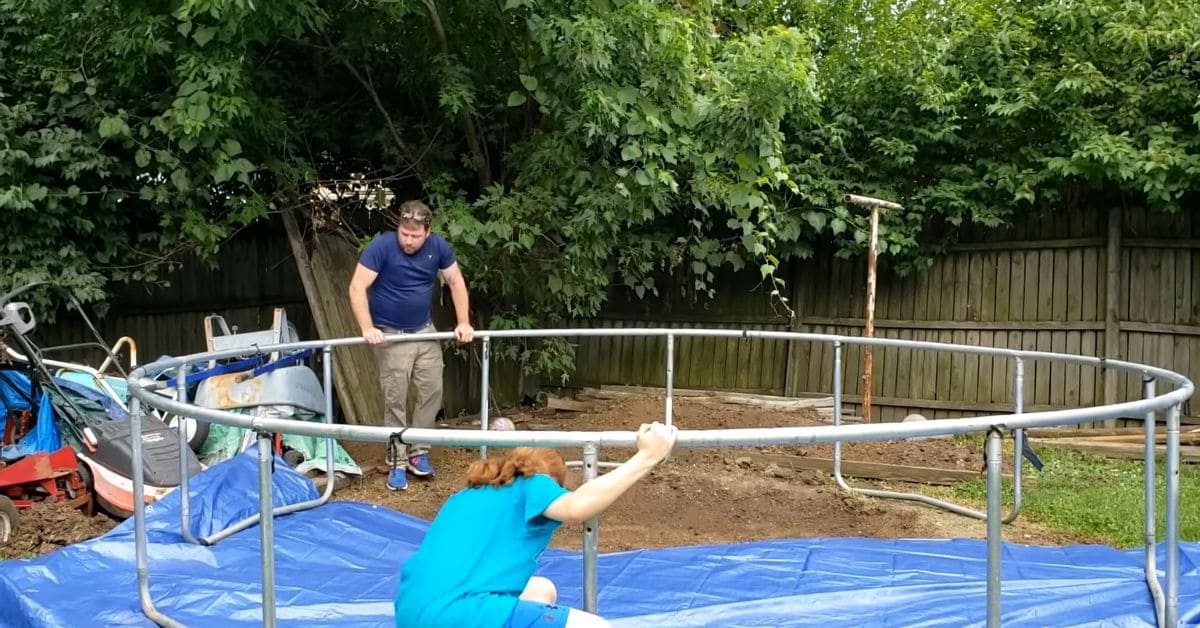
Trampolines should be placed on flat ground to ensure safety. If the ground is sloped, it can cause users to move towards the lower side of the trampoline, increasing the risk of falls.
If the ground is slightly uneven, you can make small adjustments by creating channels in the soil for the trampoline legs to sink into. However, if the slope is too steep, you may need to build a terrace or flat area to safely accommodate the trampoline.
Identifying a Safe Position for the Trampoline:
Trampolines are heavy, but their accessories, like the enclosure and mat, can catch wind like a sail. This means that during strong winds, the trampoline can lift off the ground. To prevent this, make sure to place the trampoline in an area that is shielded from the prevailing wind.
Using a trampoline anchor is also highly recommended to secure it firmly to the ground and prevent it from being lifted by the wind.
Purchasing the Appropriate Size Trampoline:
When choosing a trampoline, it’s important to consider age appropriateness. Generally, a full-size trampoline measuring 6 feet or more is considered suitable for children 6 years old and above.
Creating a Soft Ground Surrounding the Trampoline Entrance:
To enhance safety, it’s essential to have a soft and cushioned area around the trampoline entrance. This means ensuring that the ground or surface surrounding the entrance is gentle and provides a layer of protection in case someone accidentally falls or steps off the trampoline.
Children may forget to close the entrance, leading to a higher risk of injuries. By maintaining a soft and cushioned area, the impact of such incidents can be reduced, minimizing the chances of harm.
Adding foam mats or other padding materials around the entrance can absorb impact and create a safer environment for trampoline users, particularly children who may be more prone to accidents or forgetfulness.
Assessing the Available Space:
Take into account the space you have for your trampoline. As a general guideline, a minimum of 2.5 meters of open space should be around the trampoline’s edge. If a safety enclosure is installed, you can reduce this clearance to about 1 meter.
What are the common sizes of trampolines?
Trampolines are available in various sizes, ranging from small to large. A 10ft trampoline is considered small to medium, while a 12ft trampoline falls in the medium to large range. These sizes are popular among small families who have limited backyard space.
They offer a good balance between size and convenience. If you have more space available, you can opt for larger trampolines, with the largest commonly found for home use being around 16 ft in diameter.
These larger trampolines provide a greater jumping area and are suitable for those with ample outdoor space.
What is the recommended height for a trampoline net?
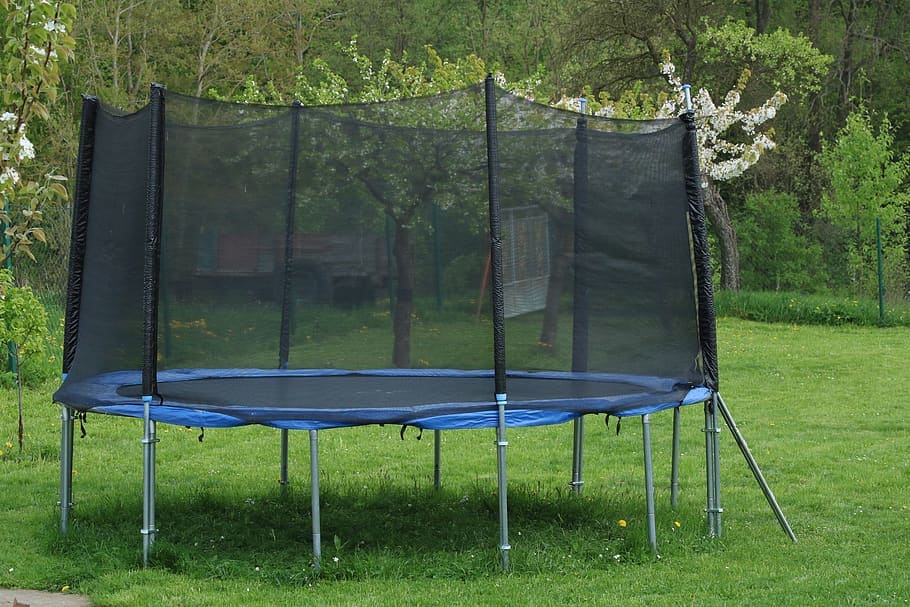
Trampoline nets are measured from the frame to the top of the net. The ideal net height for well-known brands such as Springfree and Vuly is approximately 1.8m (6 feet) and 1.75m (5.7 feet), respectively.
However, it’s important to note that some models may have a height of up to 2m (6.6 feet). Choosing a net with the appropriate height is crucial to ensure the safety of trampoline users and prevent any accidental falls.
How do you measure a safety net on a trampoline?
If you want to add or replace a safety net on your trampoline, you need to know the diameter of your trampoline. Measure the size of your trampoline’s frame by measuring from one outer edge to the opposite outer edge.
Also, count the number of poles on your trampoline. This information will help you select the appropriate safety net for your trampoline.
How can I measure for a safety pad on my trampoline?
To measure for a safety pad on your trampoline, first measure the frame size by measuring from one outer edge to the opposite outer edge across the widest part of the trampoline. Then, measure the length of the springs from one hook end to the other.
If you’re buying a safety pad with holes for trampoline poles, remember to count the number of poles your trampoline has. This information will help you select the right size and type of safety pad for your trampoline.
Recording and Comparing Measurements
Recording and comparing measurements is important when measuring a trampoline or its components. Here’s a general process to follow:
Importance of Documenting the Measurements for Reference:
When measuring a trampoline or its components, it is crucial to document the measurements for future reference. Here’s why:
- Accuracy: Documenting the measurements ensures that you have an accurate record of the trampoline’s dimensions and other important details. This helps avoid confusion or discrepancies later on.
- Replacement Parts: If you need to order replacement parts or accessories, documenting the measurements will make the process much easier. You can refer to the recorded measurements to ensure you select the correct parts that fit your trampoline perfectly.
- Future Modifications: Documented measurements allow you to plan for future modifications or upgrades. Whether it’s adding a safety net, changing the padding, or resizing the trampoline, having the measurements on hand will assist you in making informed decisions.
Comparing Trampoline Sizes for Informed Decisions:
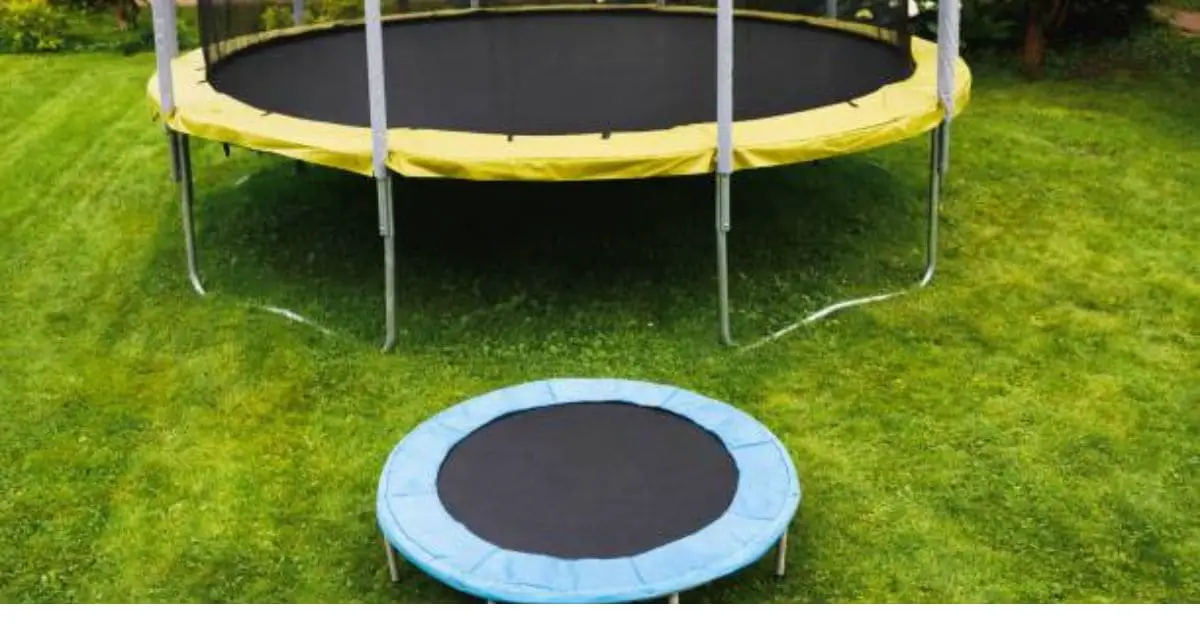
Once you have recorded the measurements, you can use them to compare trampoline sizes and make informed purchasing decisions. Here’s how:
- Size Compatibility: Compare the recorded measurements with the specifications provided by trampoline manufacturers. This allows you to determine if the trampoline you’re considering purchasing will fit appropriately in your designated space.
- Safety Considerations: By comparing the measurements, you can ensure that the trampoline size provides enough clearance space around it for safe usage. This is especially important when considering the proximity of trees, structures, or overhead cables.
- User Requirements: Consider the intended users of the trampoline. For younger children, a smaller size may be suitable, while larger sizes may be preferred for older or more experienced jumpers.
By comparing measurements, you can select a trampoline size that meets the needs and preferences of the intended users.
Overall, documenting and comparing measurements is essential for accurate record-keeping, selecting the right replacement parts, planning for modifications, and making informed purchasing decisions based on size compatibility, safety considerations, and user requirements.
Additional Factors to Consider
Here are some additional factors to consider when purchasing a trampoline:
- Weight and User Capacity: Determine the maximum weight capacity of the trampoline to ensure it can safely accommodate the intended users. Consider the weight range and number of users who will be jumping on the trampoline at the same time.
- Safety Clearances and Recommended Space: Check the manufacturer’s guidelines for safety clearances and recommended space around the trampoline. This includes ensuring enough clearance from trees, fences, walls, or other structures to prevent accidents. Adequate space around the trampoline also allows for safe entry and exit.
- Safety Features: Look for trampolines with features like enclosure nets, padded frames, and spring covers. These features help reduce the risk of falls and injuries.
- Frame and Material Quality: Consider the quality and durability of the trampoline’s frame and materials. Look for sturdy and rust-resistant frames and UV-resistant and weather-resistant materials for longevity and durability.
- Ease of Assembly and Maintenance: Check if the trampoline is easy to assemble with clear instructions. Consider the maintenance requirements, such as cleaning and upkeep, to ensure they are manageable.
- Brand Reputation and Customer Reviews: Research the brand’s reputation and read customer reviews to understand the trampoline’s quality, performance, and customer satisfaction.
- Budget: Set a budget for your trampoline purchase and find options that meet your requirements within your price range.
By considering these additional factors, you can make an informed decision and choose a trampoline that suits your needs and provides a safe and enjoyable jumping experience.
Calculate the overall size
To calculate the overall size of the trampoline, you need to add the diameter and frame width measurements and also find the area of the jumping surface. Let’s say your trampoline has a 12-foot diameter and a 1-foot frame width:
-
Add the Diameter and Frame Width:
- The total width of the trampoline is the sum of the diameter and frame width.
- Total Width = 12 feet (Diameter) + 1 foot (Frame Width) = 13 feet.
-
Calculate the Overall Area of the Jumping Surface:
- You can use the formula for the area of a circle, which is A = πr², where “A” represents the area and “r” is the radius.
- The radius is half of the diameter.
- Radius = 12 feet (Diameter) / 2 = 6 feet.
- Calculate the area:
- A = π x (6 feet)² ≈ 3.1416 x 36 square feet ≈ 113.1 square feet.
So, the overall size of your trampoline is approximately 113.1 square feet. This means the jumping surface is about 113.1 square feet in area, and the total width is 13 feet.
FAQs About How to Measure Size of Trampoline
Q:1 How do I measure the size of my trampoline?
To measure the size of your trampoline, start by measuring the diameter of the frame. Measure from one outer edge to the opposite outer edge, passing through the center of the trampoline. This measurement will give you the overall size of the trampoline.
Q:2 Should I measure the mat or the frame of the trampoline?
Measuring the frame of the trampoline rather than the mat is recommended. The frame size determines the overall size and dimensions of the trampoline.
Q:3 How can I measure the spring length of my trampoline?
To measure the spring length, remove a spring from the trampoline. Measure from one end of the spring to the other using a tape measure. Measuring the spring when it is not attached and slightly stretched for accurate results is best.
Q:4 What are the common sizes of trampolines?
Common sizes of trampolines include 8 feet, 10 feet, 12 feet, 14 feet, and 16 feet in diameter. These sizes cater to different age groups and space requirements.
Q:5 Can I measure an oval-shaped trampoline the same way as a round trampoline?
No, oval-shaped trampolines require different measurements. Measure the length of both sides by starting from the outer edge and measuring straight across to the opposite side for the width. Then, measure perpendicularly from one outer edge to the other for depth.
Q:6 Do I need to consider the space around the trampoline when measuring its size?
Yes, it is important to consider the recommended clearance space around the trampoline. This ensures safety and allows users to move freely without any obstructions.
Q:7 What is the ideal clearance space around a trampoline?
The ideal clearance space around a trampoline should generally be at least 1.5 meters (5 feet) on all sides. This clearance ensures enough space for safe movement and prevents users from accidentally hitting any surrounding objects or structures.
Conclusion:
In conclusion, measuring the size of a trampoline is an essential step when purchasing replacement parts or selecting the right trampoline for your needs. Following the proper measurement techniques can ensure a proper fit and maximum safety during trampoline use.
Start by determining the shape of your trampoline, whether it’s circular, rectangular, oval, or irregular shape. Then, measure the appropriate dimensions such as the frame diameter for circular trampolines, the length and width for rectangular trampolines, or the length of both sides for oval trampolines.
Additionally, consider other factors such as the weight and user capacity of the trampoline, safety clearances, and the space available in your yard. Providing adequate clearance space around the trampoline is crucial to prevent accidents and allow for safe movement.
Documenting your measurements and comparing them to the specifications provided by manufacturers will help you make informed purchasing decisions and ensure compatibility with replacement parts.
By carefully measuring and considering these factors, you can choose the right trampoline size that suits your needs, provides a safe jumping experience, and brings joy to users of all ages. Remember to always prioritize safety and follow the manufacturer’s guidelines for installation and usage.
After reading this comprehensive article, we hope you will be well aware of how to measure trampoline size. If you have any questions, feel free to comment below!

